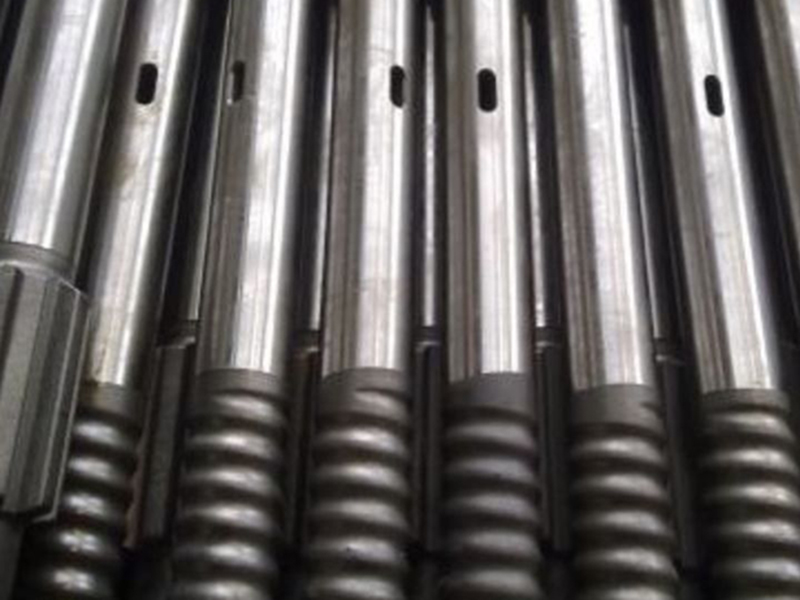The heat treatment process of rock drilling tool shank adapter usually includes the following steps:
Pretreatment: First clean the shank tail to remove surface dirt and oxides. Raw materials usually require pretreatment before actual processing. This includes removing dirt, grease and oxides from the surface to ensure the smooth progress of subsequent processes. Pretreatment can be done by physical methods (such as cleaning, sandblasting, etc.) or chemical methods (such as pickling, solvent washing, etc.).
Heating: Put the shank tail in a heat treatment furnace to heat it. The heating temperature is adjusted according to the specific material composition and requirements. Heating is one of the integral steps in many manufacturing processes. Materials can be brought to a desired temperature by heating to facilitate physical or chemical changes. Heating can be achieved by flame, electric heating or other heat sources, and the temperature and time will be adjusted according to specific materials and requirements.
Heat preservation: After reaching the required temperature, heat preservation for a certain period of time to ensure that the heat treatment effect is sufficient. After the material reaches the desired temperature, it needs to be maintained for a certain period of time to ensure that the temperature inside the material is evenly distributed and to allow the phase change or chemical reaction of the material to proceed fully. The holding time is usually related to the nature, size and degree of change required of the material.
Cooling: After keeping warm, take the shank out of the furnace and cool it down quickly. The cooling method can usually choose water quenching or oil quenching. After completing the heat treatment, the material needs to go through a cooling phase. Cooling can be achieved by natural cooling or rapid cooling (such as water quenching, oil quenching, etc.). The cooling rate has an important influence on the physical and mechanical properties of materials, and proper cooling methods can adjust and control the structure and hardness of materials.
Reprocessing: After the tool holder cools down, some deformation or internal stress may occur, which requires reprocessing, such as trimming and grinding, to ensure its dimensional accuracy and surface quality. After heat treatment, the material may become distorted, raised, or too hard, requiring reworking. Reprocessing includes trimming, grinding, cutting, cold rolling or other processing techniques to make the size and surface quality of the product meet the requirements.
Tempering treatment (optional): To further improve the hardness and strength of the shank, tempering treatment can be carried out. Quenching and tempering treatment usually includes tempering or normalizing process.
Inspection and quality control: inspection of the heat-treated tool holder, including hardness test, metallographic analysis, mechanical property test, etc., to ensure that its quality meets the requirements. It should be noted that the specific heat treatment process will vary according to the material, size and application requirements of the handle. Quality inspection is an essential part of the manufacturing process. After heat treatment and reprocessing, the product needs to undergo quality inspection to ensure that it meets the design and manufacturing requirements. Quality inspection includes physical performance testing, chemical composition analysis, dimensional measurement, surface quality inspection, etc. Through quality inspection, existing problems can be found and corrected in time, and the quality and performance of products can be guaranteed.
Therefore, before heat treatment, it is recommended to conduct detailed process research and experiments to determine the most suitable heat treatment process scheme.
Post time: Aug-08-2023








